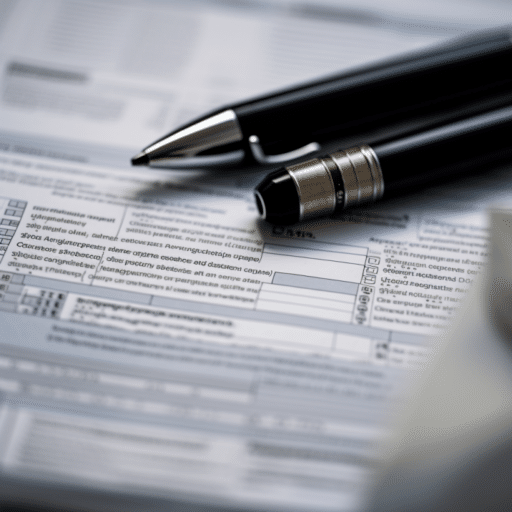The Swiss pension system consists of three pillars, with Pillar 2 being the mandatory occupational pension scheme. In this blog, we will delve into the details of Switzerland Pillar 2 and provide you with comprehensive information to understand this crucial aspect of retirement provision.
If you want to invest as an expat or high-net-worth individual, which is what I specialize in, you can email me (advice@adamfayed.com) or use WhatsApp (+44-7393-450-837).
This article isn’t formal advice, and the facts might have changed since we first wrote it.
Table of Contents
What is Pillar 2, and how does it work?
Pillar 2 is a crucial component of the Swiss pension system that focuses on providing individuals with a supplementary retirement income. It operates as a mandatory occupational pension scheme wherein both employers and employees contribute to a pension fund on a regular basis.
These contributions are based on a percentage of the employee’s salary and are intended to accumulate over time, generating returns to support the individual’s retirement.
The purpose of Pillar 2 is to ensure that individuals have an additional source of income during their retirement years in addition to the state pension provided by Pillar 1. By requiring mandatory contributions from both employers and employees, Pillar 2 aims to create a substantial pool of funds that can sustain retirees’ financial needs.
The structure of Pillar 2 involves various stakeholders, including employers, employees, and pension funds. Employers are responsible for deducting the employee’s contribution from their salary and transferring it to the designated pension fund.
These funds are then professionally managed by the pension funds, which invest them in a diversified portfolio of assets to generate returns over time.
The contributions made to Pillar 2 throughout an individual’s working life serve as a form of savings that accumulate until retirement. Upon reaching retirement age, which typically ranges from 64 to 67, depending on the year of birth, the accumulated capital in the pension fund is converted into a lifelong pension. This pension provides a regular income stream to support retirees’ living expenses during their retirement years.
Who is covered by Pillar 2?
Pillar 2 coverage extends to a wide range of employed individuals in Switzerland. The majority of employees, including part-time and temporary workers, are obligated to participate in Pillar 2.
This means that if you are employed by a company in Switzerland and earn above a certain income threshold, you are likely covered by Pillar 2.
However, there are exceptions and special cases that should be considered. Some individuals may be exempt from Pillar 2 if they fall under certain categories, such as self-employed individuals or those working in specific professions with alternative retirement provisions.
Additionally, individuals who have reached the statutory retirement age and are still working may not be required to make Pillar 2 contributions.
It’s important to note that even if you fall into one of these exceptions, it is still crucial to plan for your retirement and consider alternative ways to save for the future. Seeking guidance from a financial advisor can help you navigate the complexities of retirement planning and ensure you have a comprehensive strategy in place.
Overall, Pillar 2 plays a significant role in Switzerland’s pension system by providing a mandatory occupational pension scheme for employed individuals. Understanding its purpose, structure, and coverage is essential for effective planning for retirement and ensuring a financially secure future.

The primary factor in determining the contribution amount is the individual’s income.
How are Pillar 2 contributions calculated?
Pillar 2 contributions are calculated based on a specific formula that takes into account an individual’s income and age. The contribution calculation methods ensure that the amount contributed to the pension fund is proportionate to the individual’s earnings and allows for adequate savings over time.
The primary factor in determining the contribution amount is the individual’s income. Typically, a certain percentage of the individual’s salary is designated as the contribution rate. This rate may vary depending on the pension fund and can range from around 7% to 18% of the individual’s annual income.
Additionally, the contribution rate may increase as the individual gets older. This is because older individuals have a shorter period to accumulate savings for retirement. The increase in the contribution rate helps compensate for this shorter timeframe and ensures that they can build an adequate retirement nest egg.
It’s important to note that there are maximum limits on Pillar 2 contributions. These limits are set by the government and aim to prevent excessive contributions that may result in tax advantages for high-income earners. The maximum limits vary depending on factors such as age and income level.
Can I choose my Pillar 2 pension fund?
Yes, individuals have the freedom to choose their Pillar 2 pension fund. When starting a new job, your employer will provide information about the available pension funds that you can select from. This choice allows individuals to have some control over how their pension savings are managed and invested.
The pension fund selection process typically involves reviewing the different pension funds’ offerings and assessing various factors. It’s important to consider factors such as the fund’s historical performance, fees and charges, investment strategies, customer service, and financial stability.
Additionally, individuals may want to evaluate the fund’s asset allocation and investment options. Some pension funds offer a range of investment choices, including conservative, balanced, and growth-oriented portfolios. Assessing your risk tolerance and investment objectives can help you select a fund that aligns with your preferences.
While selecting a pension fund, it’s also essential to review any additional benefits or features the fund may offer. Some funds provide supplementary insurance coverage or additional services, such as financial planning assistance, that can enhance your overall retirement provision strategy.
If you’re uncertain about selecting a pension fund, seeking guidance from a financial advisor can provide valuable insights and help you make an informed decision.
What happens to my Pillar 2 when I change jobs?
When you change jobs, your Pillar 2 savings have portability, meaning they can be transferred to the pension fund of your new employer. This ensures that your accumulated pension assets continue to grow and are maintained within the Pillar 2 framework.
There are several options available when changing jobs and dealing with your Pillar 2 assets:
Transferring to the new employer’s pension fund
If your new employer has a different pension fund, you can transfer your existing Pillar 2 savings to the new fund. This allows for the consolidation of your pension assets in one place.
Leaving the assets in the existing pension fund
In some cases, you may have the option to leave your Pillar 2 assets in the existing pension fund even after changing jobs. This is particularly relevant if your new employer uses the same pension fund or if you prefer to keep your assets separate.
Transferring to an individual pension account
Alternatively, you may have the option to transfer your Pillar 2 savings to an individual pension account. This can provide more flexibility and control over your retirement savings, as you can choose the investment options and have a direct say in managing the assets.
When deciding which option is best for you, it’s important to consider factors such as the fees associated with transferring or maintaining the assets, the investment options offered by the new pension fund or individual pension account, and the overall compatibility with your retirement goals.
Understanding the portability options and seeking professional advice can help you make an informed decision and ensure the seamless transition of your Pillar 2 assets when changing jobs.

It’s crucial to consult with a tax advisor or financial professional to understand the potential tax implications of early withdrawals from Pillar 2 savings.
Can I withdraw my Pillar 2 savings before retirement?
No, Pillar 2 savings are generally intended for retirement provision and cannot be withdrawn before reaching the retirement age. However, there are specific circumstances in which early withdrawals may be allowed.
One common condition for early withdrawals is permanent disability. If an individual becomes permanently disabled and is unable to work, they may be eligible to withdraw their Pillar 2 savings before reaching the retirement age. The disability must be certified by a medical professional and meet the criteria set by the pension fund.
Another possibility for early withdrawals is for the purpose of purchasing a primary residence. Individuals may be able to access a portion of their Pillar 2 savings to fund the purchase of their first home. However, this option is subject to specific conditions and may require repayment within a certain period.
It’s important to note that early withdrawals from Pillar 2 savings come with consequences. Firstly, the amount withdrawn will reduce the individual’s future retirement income. As these funds were intended for long-term savings, early withdrawals deplete the capital available for generating retirement income.
Additionally, early withdrawals may have potential tax implications. Depending on the specific circumstances and regulations, the withdrawn amount may be subject to income tax. It’s crucial to consult with a tax advisor or financial professional to understand the potential tax implications of early withdrawals from Pillar 2 savings.
How is the Pillar 2 pension calculated at retirement?
The Pillar 2 pension amount at retirement is calculated based on several factors, including the accumulated contributions, investment returns, and the conversion rate applied by the pension fund.
The accumulated contributions made throughout an individual’s working life form the basis of the pension calculation. These contributions, along with any returns generated through investment, determine the total amount of capital available in the pension fund.
To convert this accumulated capital into a lifelong pension, a conversion rate is applied. The conversion rate determines how much pension income the individual will receive annually based on their accumulated capital. The conversion rate is determined by the pension fund and can vary between funds.
The pension formula used to calculate the pension amount typically involves multiplying the accumulated capital by the conversion rate. However, specific factors can affect the final pension amount. These factors may include the individual’s average salary during their working years, the number of years of contributions, and any additional benefits or adjustments offered by the pension fund.
It’s important to understand that the pension amount may be subject to adjustments and may vary depending on the specific terms and conditions of the pension fund. Seeking information and guidance from the pension fund administrator or a financial advisor can provide clarity on the calculation methods and help individuals plan for their retirement income.
What are the investment options for Pillar 2 funds?
Pillar 2 pension funds offer various investment options to grow the accumulated savings over time. These investment choices are typically managed by the pension fund’s trustees or professionals hired by the fund.
The investment options within a pension fund can include a range of assets such as stocks, bonds, real estate, and other financial instruments. The specific investment options available may vary depending on the pension fund and its investment strategy.
When considering investment options within a Pillar 2 fund, it’s essential to assess the risk profiles, asset allocation strategies, and potential investment returns. Different funds may offer varying levels of risk, with some focusing on conservative investments for capital preservation, while others may have a more growth-oriented approach.
Understanding your risk tolerance and investment objectives is crucial when selecting the investment options within your Pillar 2 fund. Conservative portfolios may prioritize stability and income generation, while more aggressive portfolios may aim for higher growth potential.
It’s important to review the fund’s investment performance, fees and charges associated with the investment options, and the track record of the fund’s investment managers. Assessing these factors can help individuals make informed decisions about how their Pillar 2 savings are invested and aligned with their long-term financial goals.
Consulting with a financial advisor or doing thorough research can provide further insights into the investment options available within your specific Pillar 2 pension fund. This can ensure that your investment strategy is appropriate for your risk tolerance and retirement objectives.
What are the tax implications of Pillar 2 contributions and withdrawals?
Pillar 2 contributions and withdrawals have specific tax implications that individuals should be aware of when planning for their retirement. Understanding the tax treatment of Pillar 2 can help individuals make informed decisions and optimize their overall tax situation.
Pillar 2 contributions are generally tax-deductible, meaning they reduce an individual’s taxable income. This provides individuals with a tax advantage by lowering their overall tax liability. The exact tax deductions allowed may vary depending on the regulations and tax laws of the specific jurisdiction.
However, it’s important to note that the tax deductions for Pillar 2 contributions are subject to certain limits and conditions. These limits may vary depending on factors such as the individual’s income level, the contribution rate, and the maximum allowable deductions set by the government.
On the other hand, withdrawals from Pillar 2 during retirement are typically subject to income tax. The pension income received from Pillar 2 is treated as taxable income and is subject to the prevailing income tax rates. The exact tax rate applied to the pension income may depend on various factors, such as the total pension amount, the retiree’s tax bracket, and any applicable deductions or exemptions.
It’s crucial to consult with a tax professional or financial advisor to understand the specific tax implications of Pillar 2 contributions and withdrawals based on your individual circumstances. They can provide personalized guidance on maximizing tax benefits, optimizing withdrawals, and ensuring
compliance with tax regulations.

By being well-informed and seeking expert advice, individuals can navigate the complexities of Pillar 2 effectively and ensure a secure and comfortable retirement in Switzerland.
Can I opt out of Pillar 2?
In most cases, individuals are not allowed to opt out of Pillar 2. Pillar 2 is a mandatory occupational pension scheme that applies to the majority of employed individuals in Switzerland. The purpose of this mandatory participation is to ensure adequate retirement provisions for the working population.
However, there are limited circumstances in which individuals may be exempt from Pillar 2. These exceptions include certain self-employed individuals and specific professional categories that have alternative retirement provisions in place. For example, individuals who are members of other pension systems, such as clergy members or military personnel, may not be obligated to participate in Pillar 2.
It’s important to note that opting out of Pillar 2 comes with considerations and consequences. Opting out means that individuals will not benefit from the mandatory employer and employee contributions, potentially resulting in a lower retirement income. It’s crucial to carefully evaluate the alternatives available and consider long-term retirement planning before making a decision to opt out of Pillar 2.
In any case, seeking advice from a financial advisor or pension expert is recommended to fully understand the implications and potential alternatives for retirement provisions in Switzerland.
Conclusion
It’s essential to understand the nuances of Pillar 2 and its impact on retirement planning. However, each individual’s situation may differ, and personalized guidance is crucial.
Therefore, it is strongly recommended that readers seek professional advice from financial advisors or pension experts who can provide personalized guidance and help individuals make informed decisions based on their specific circumstances.
By being well-informed and seeking expert advice, individuals can navigate the complexities of Pillar 2 effectively and ensure a secure and comfortable retirement in Switzerland.
Pained by financial indecision? Want to invest with Adam?

Adam is an internationally recognised author on financial matters, with over 760.2 million answer views on Quora.com, a widely sold book on Amazon, and a contributor on Forbes.



